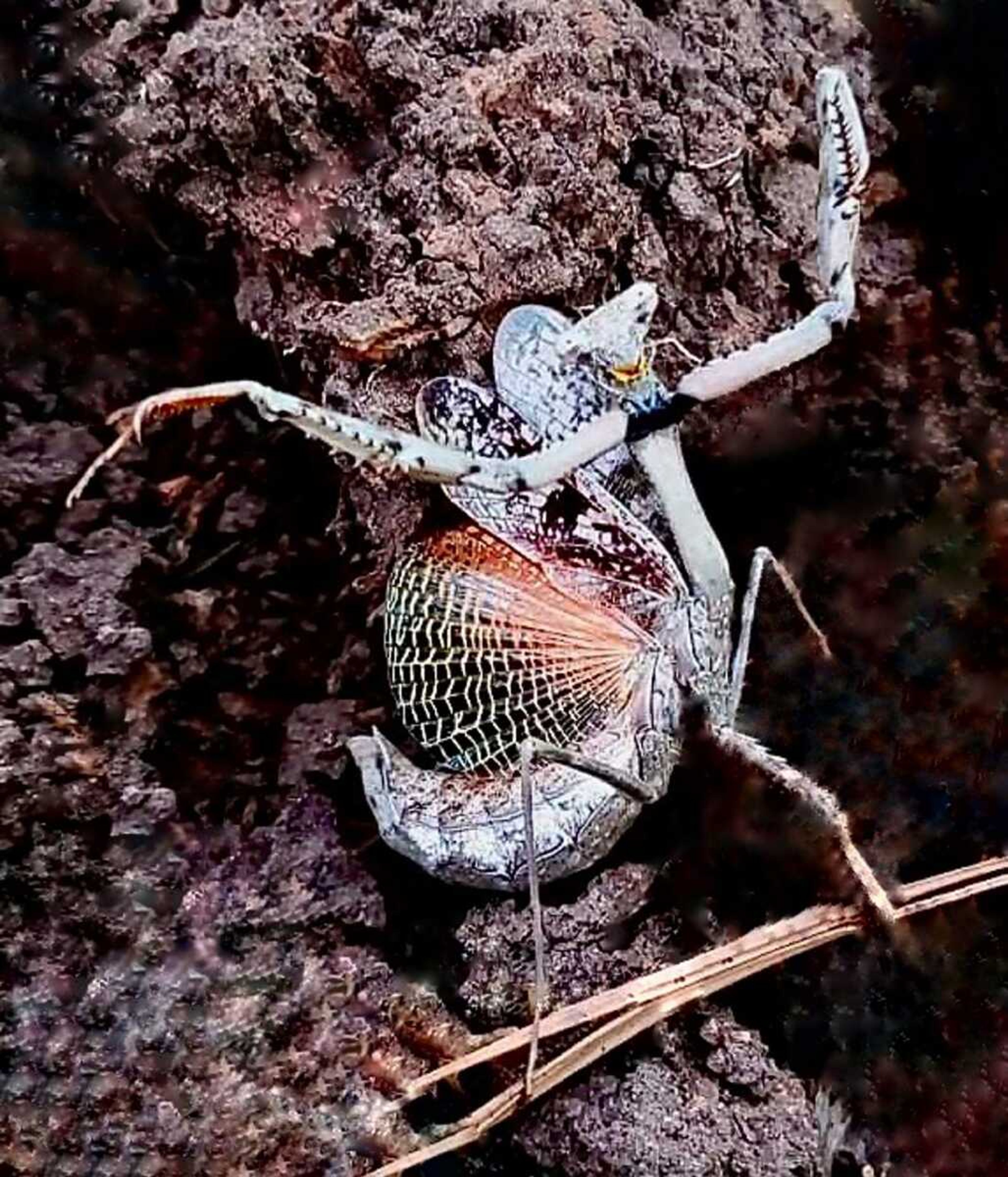This photo (taken by my daughter) is of an American native praying mantis. Its scientific name is stagmomantis. That name is easy to say if broken into three syllables -- stag-mo-mantis. There are several kinds of mantises native to North America. A few widely distributed invasive mantises come from China and Europe.
The stagmomantis is usually mottled gray or dull green in color and is generally smaller than the invasive ones, which are brighter green with some yellow.
This insect is called a praying mantis because it hunts by sitting still with its front "arms" folded as if in prayer. It will snatch and eat almost any insect that ventures within reach. The best time to see a stagmomantis is from late August to mid October in a weedy area. Adult praying mantises die during winter. Eggs laid the year before hatch when the weather warms in late spring, and tiny mantises reappear.
Connect with the Southeast Missourian Newsroom:
For corrections to this story or other insights for the editor, click here. To submit a letter to the editor, click here. To learn about the Southeast Missourian’s AI Policy, click here.










